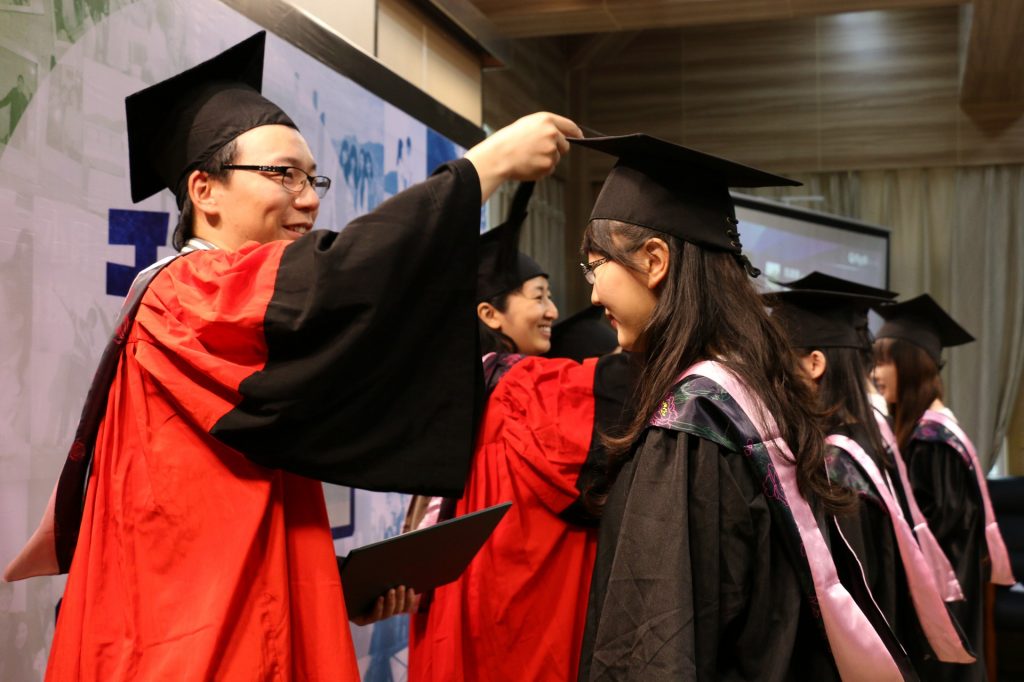3 Professional Life Hacks from The ‘Master of Connections’, and More – Boston News

Let’s explore some of the most interesting stories that have emerged from Boston business schools this week.
3 Professional Life Hacks from a Billionaire Introvert – MIT Sloan Newsroom
In a recent podcast with MIT Sloan School of Management Principal Research scientist Andrew McAfee, LinkedIn co-founder Reid Hoffman thoroughly explained how one person can maintain massive success despite their habits as an introvert.
Hoffman explains three simple professional life hacks that help his process, of which include:
- “Deliberately leave some room for serendipity.”
- “Find someone who knows you well enough to refer you to me and knows me well enough that I care about the reference.”
- “Embrace your skillset.”
On the latter, Hoffman says:
“What I learned was that private company boards are a very good use of my skillset because more or less … they go ‘here’s what we’re working on. That’s like sport, that I’m like ‘oh, I enjoy this.’ How do we solve a customer acquisition problem, how do we solve an executive hiring problem, how do we solve a competition problem, how do we solve a need to reinvent the product problem; all of these kinds of things. That’s what makes this game hard, and I enjoy that.”
You can read more from the Hoffman podcast here.
Work Your Magic: Erica Feldmann ’12MA Makes Witches Her Business – Simmons Blog

Erica Feldmann ‘12MA, Hauswitch Home + Healing’s Head Witch in Charge
The Simmons Blog recently profiled Hauswitch Home + Healing’s Head Witch in Charge Erica Feldmann, ‘12MA, who founded HausWitch to be a “hyper-feminist, hyper-local and hyper-inclusive” space for local, independent makers, crafters, and witches to meet, shop, and build community.
The Salem, MA-based Feldmann “focused her gender/cultural studies degree on the oppression of witches from a feminist perspective” so her use of the word—which one acronym could mean “Woman In Total Control of Herself”—and her choice of location are both very deliberate.
“I think the word ‘witch’ in its essence is female. I think it’s about power and challenging the dominant culture. Who better to do this than the witch? Not from a place of being a victim, but from a place of strength.”
Feldmann adds, “Being a woman in business, I literally surround myself with other women who are very invested in the project of lifting each other up.”
You can read more about Feldmann and HausWitch here.
Productive Slacking with Anirudh Dhebar – Babson Blog
Babson College F.W. Olin Graduate School of Business Professor of Marketing Anirudh Dhebar recently unpacked an FT article entitled “Managers can draw a line between slack and slacking” as part of a weekly informal student chat he engages in at the Olin Café on Mondays evenings and Tuesday afternoons “to address things that don’t get touched upon in class.”
Dhebar posits whether “it is better to slack or should we often be slacking—a time taken to unwind.” In other words, is it healthy for managers to incorporate slacking into everyone’s daily schedule or should employees practice self-care and slack off the clock?
“If you think it is the managers responsibility to inculcate a culture of slack, why should it not be the individual’s responsibility or the company’s as a whole?”
Dhebar describes their day as a series of different slacks. For instance, “Class is a form of slack where [I] push students to think beyond the case and [my] students’ perspectives make [me] think differently.”
You can read more about Dhebar’s perspective in the Babson Blog.
Northwestern Kellogg & HKUST Lead the 2018 FT EMBA Rankings

Where should you go to school for your Executive MBA? Good question. While, the answer may not be quite so simple, an official EMBA ranking can help.
There are many things you should consider before choosing the best EMBA program for you including average graduation salary, industry employment, research interests, and more. However, a good place to start is with the 18th edition of the Financial Times Global Executive MBA Ranking. This ranking collects key data from business schools and alumni around the world to come up with a list of the top 100 best programs worldwide.
We’ve collated some of the critical data from the ranking study to give you insight into what’s going on in the world of EMBA programs.
EMBA Graduates Choose Industry and Manufacturing
Compared to full-time MBAs, EMBA graduates are much more likely to work in certain industries like manufacturing. In fact, three times as many EMBAs are employed in industry or manufacturing compared to their full-time peers. The figure accounts for 17 percent of all graduates. In comparison, only 10 percent of EMBA graduates are in consulting roles. And they’re less likely to work in finance, too.
EMBAs Earn More Money
EMBA graduates can also expect to earn more money than full-time MBAs after graduation. The average salary for an EMBA is $220,000 whereas an MBA alumnus can expect to make $146,000. It’s a large gap that’s similar to the salary gap between an MBA and a MiM graduate ($146,000 VS $67,000). Keep in mind, however, that the typical Executive MBA student is significantly older and often has more work experience.
In contrast, full-time MBAs win when it comes to salary boosts before and after earning the degree. MBA alumni generally increase their salary by 107 percent while EMBAs only experience a 59 percent boost.
Top 10 EMBA Programs
This year, the top ten EMBA programs, according to the Financial TImes, includes four joint programs. In fact, these were the top four programs in the world ranking well for post-EMBA salary, alumni leadership positions, and work experience. Each of these programs offer excellent networking opportunities thanks to different cohorts across different campuses, connecting students around the world.
Here’s how all the rankings stacked up.
1. Northwestern Kellogg & HKUST
This joint program ranks first for the third year in a row, and it’s the ninth time in 12 years that it has headed the list—the other three times it ranked second. The program is known for having the highest average salary three years post-graduation, $507,000—$140,000 more than the second-highest salary. It’s also known for having half of its alumni as company leaders three years post-graduation.

No EMBA has dominated the annual FT ranking quite like the Northwestern Kellogg & HKUST join program, earning top billing once again for 2018.
2. HEC Paris, LSE, & NYU Stern
This trium global EMBA program ranks second in 2018, up from fifth the previous year. The program is ranked first in work experience, languages, and international course experience rank. It also ranks highly in average salary ($347,970) with an expected 60 percent salary increase three years post-EMBA.
3. Tsinghua University & INSEAD
For the second year in a row, the Tsinghua-INSEAD dual degree MBA comes in third overall on the FT EMBA ranking. Located in China, Singapore, France, and the UAE, the program is known for its high salary three years post graduation ($365,746), and its high percentage of female students (45 percent).
The rest of the top ten shakes down as follows:
- EMBA—Global Asia: Columbia Business School, HKU, & London Business School
- Ceibs
- HEC Paris
- Washington University Olin Business School
- Shanghai: Jiao Tong University Antai
- IESE Business School
- MIT Sloan School of Management
Surprising Schools
There were quite a few surprises in this year’s EMBA ranking.
- Though HEC Paris has ranked in the top five since 2006 because of its joint program with NYU Stern and LSE, this was the first year the school entered the top ten ranking on its own. The HEC Paris solo EMBA program ranks sixth overall, making it the highest new entrant.
- IESE Business School took home the crown as the top EMBA program for the new criterion corporate social responsibility (CSR).
- The University of Toronto Rotman School of Management EMBA moved up the most places in 2018, rising to 47th place overall—20 places higher.

No school saw a bigger rankings jump than the University of Toronto Rotman School of Management, rising 20 spots in 2018.
FT EMBA Ranking Methodology
To come up with the 2018 EMBA ranking, the Financial Times reached out to a record 139 programs with two online surveys: the first completed by the school and the second by alumni who graduated from programs in 2014. The methodology of the ranking is as follows:
- Alumni were required to provide feedback on salary today, salary increase, career progress, work experience, and aims achieved—accounting for 55 percent of the ranking’s weight.
- Schools provided insight into ten criteria, accounting for 35 percent of the total ranking. Criteria included: gender and international diversity, board members, international program reach, and more.
- Accounting for the final 10 percent of the ranking was the FT research rank, which looks at the number of articles published by a school’s full-time faculty.
And, for the first time ever, this year’s EMBA ranking included a new criterion for corporate social responsibility (CSR). This new criterion took a look at how many of a school’s core courses were dedicated to ethics, social, and environmental issues. Weighting at 3 percent, this criteria replaced the number of Ph.D. graduates per school.
The Trump Threat Could Endanger Chinese Student Visas

For Chinese students looking to study in the United States, the trade war could start making things increasingly difficult. In fact, getting a student visa may become virtually impossible soon.
Earlier this year, the Financial Times reported that the Trump administration considered banning all Chinese students from the U.S. According to the newspaper, “Stephen Miller, a White House aide who had been pivotal in developing the administration’s hardline immigration policies, pushed the president and other officials to make it impossible for Chinese citizens to student in the U.S.” However, if that were to happen, the consequences would be devastating.
More than 350,000 Chinese citizens studied at U.S. universities during the 2016-17 academic year. That’s one-third of all international students, which means a ban would have a significant impact on available academic programs and more. For example, at the University of Illinois, University Vice Provost for Undergraduate Education Kevin Pitts warned that the recent decline in Chinese student enrollment could “affect the in-state scholarships it can offer.”
And the results could become even more troubling if a continuing decline in Indian students follows. China and India make up almost half of all international students in the U.S. Without both of those countries, universities may be in serious financial trouble.
Businesses may not get off free from a ban either. A lack of Chinese student visas could mean moving more resources outside the U.S. to stay competitive. According to William R. Kerr, the author of The Gift of Global Talent, “This link between American competitiveness and immigration is a persistent theme for the tech industry … talent in the knowledge economy can go anywhere—excepting, of course, where nations impose limits on people flows.”
Even if a full ban doesn’t go into effect, the U.S. is already feeling the results of the heightened tensions between countries. In June, the Trump administration began enacting new restrictions for Chinese students, which has already decreased student application in 2018 and created uncertainty.

“There’s a lot of fear among Chinese students,” according to Heather Stewart, the Counsel and Director of Immigration Policy at NAFSA: Association of International Educators, in a recent Forbes interview.
“Before the visa policy change, there were concerns about visa denials and slow processing. Now with the one-year visa for certain areas of study, there is further apprehension that the U.S. will lose these talented students to other countries.”
At this point, there’s no way to know how the Trump administration could swing, but things aren’t looking good. There are few remaining Chinese goods on which the U.S. can impose tariffs, which means Chinese student visas could take the next big hit in the trade war.
Read the entire Forbes piece, “What Will Trump Do Next With Chinese Student Visas?”
This article has been edited and republished with permissions from Clear Admit.
Coding Becoming a Priority for Columbia Business School MBAs

Like every other elite business school worth its salt, Columbia Business School (CBS) has seen a huge surge in student interest in programming and analytics courses.
It started three years ago when Costis Maglaras, the chair of the Decision, Risk & Operations division of CBS, oversaw development of a new analytics curriculum with the goal to ensure that students were being trained in quantitative, data-driven decision-making.
Maglaras couldn’t help but notice a major gap: There were few courses in computer programming, artificial intelligence, and machine learning.
He took it upon himself to help develop a series of MBA-level programming that included analytics-focused classes to give MBA students the digital tools they needed to become tech-savvy managers. In tandem with Maglaras’ efforts, the student-run Technology Business Group helped develop courses around the programming languages of SQL and Python.
Now more than a dozen elective programming courses have been launched across CBS, helping MBA graduates land management positions at Amazon, Facebook, and Microsoft. And the popularity of these courses is only growing.
“Taking those classes gave me a lot of confidence for my interviews,” says Neha Bansal, MBA ’18. She credits the new curriculum for helping her land a job at Google as a product manager due in small part to her Python expertise.
Bansal is far from the only student who’s reaped the benefits. There are now more than 300 MBA students at CBS who have signed up to learn Python—a highly marketable skill. The only problem: The classes have now become almost too popular.

More than a dozen coding language programs have recently launched for business school students at CBS, thanks in part to the student-run Technology Business Group.
The division hired additional faculty and to figure out how to integrate the new analytics programming more intricately into the overall curriculum. Across the board, CBS is seeing more MBA students interested in programming because, simply put, it’s what employers want.
For example, Citigroup recently announced it would train all incoming analysts in Python. Goldman Sachs has asked its traders to learn how to code. According to a recent Financial Times survey, “understanding digital impact on business” is one of the most important skills for an MBA and one of the most difficult skills to recruit.
“The reality is we’re living in a very data-centric world, and whether we like it or not it’s going to be an important factor in any decision-making process down the road,” Hardeep Johar, of the CBS Engineering School, says. “We need people to be savvy about how to use data analytics and artificial intelligence on all the important decisions of today.”
To read the full article and all about what Columbia Business School is doing to help prepare MBA students to embrace data analytics, visit the CBS website.
This article has been edited and republished from Clear Admit.
Why U.S. News & World Report Changed Its Rankings Methodology

For prospective MBAs, the most difficult step towards a business school degree is knowing where to start. And for many, the most obvious is researching the near-endless amount of college ranking sites. After years of scandals and much-publicized doubts, however, the authority of these rankings may be in question.
In a recent Philadelphia Magazine op-ed, writer Sandy Hingston asks, simply, “Can We All Agree Now That College Rankings Are Bunk?”
Hingston’s critique, which highlights in relative inexactness of the college ranking sites, is not the first of its kind. In 2011, popular New Yorker writer Malcolm Gladwell wrote wrote about his issue with college rankings. In “The Order of Things,” Gladwell notes that the outcomes of students sometimes do not match college reputations.
Principally, Gladwell, the author of the massively popular 2008 book Outliers: The Story of Success, found fault in how publications like U.S. News & World Report conducts rankings. He writes, “the magazine sends a survey to the country’s university and college presidents, provosts, and admissions deans (along with a sampling of high-school guidance counselors) asking them to grade all the schools in their category on a scale of one to five.”
In regards to the scoring system, Gladwell cites numerous incidents that say reputation weighs too heavily. This is important considering that personnel often do not know what other schools are actually like. To illustrate, he brings up a different ranking from the time, with much different results:
“In an article published recently in the Annals of Internal Medicine, Ashwini Sehgal analyzed U.S. News’s ‘Best Hospitals’ rankings, which also rely heavily on reputation ratings generated by professional peers. Sehgal put together a list of objective criteria of performance—such as a hospital’s mortality rates for various surgical procedures, patient-safety rates, nursing-staffing levels, and key technologies. Then he checked to see how well those measures of performance matched each hospital’s reputation rating. The answer, he discovered, was that they didn’t. Having good outcomes doesn’t translate into being admired by other doctors. Why, after all, should a gastroenterologist at the Ochsner Medical Center, in New Orleans, have any specific insight into the performance of the gastroenterology department at Mass General, in Boston, or even, for that matter, have anything more than an anecdotal impression of the gastroenterology department down the road at some hospital in Baton Rouge?”
He goes on to say, “reputational ratings are simply inferences from broad, readily observable features of an institution’s identity, such as its history, its prominence in the media, or the elegance of its architecture. They are prejudices.”
In addition, Gladwell notes important economic distinctions that many college ranking sites ignore. For the sake of simplified ranking, small private schools are compared to massive public institutions and scored equally. But doing so overlooks the economic makeup of enrolled students, funding, and much more.
A Modern Change for U.S. News
Seven years later after Gladwell’s critique, U.S. News & World Report continues to refine its rankings method. The publication’s new changes aim to emphasize economic mobility. This comes just one year after Politico revealed that the upper-echelon schools continually reward students that are already wealthy. That discovery may not be “groundbreaking,” but the data is still jarring. Many of the country’s most well-known institutions enroll more students that come from the top 1 percent of income-earning families than the bottom 60 percent of earners.
Why is this important and why did U.S. News & World Report need to change? Like Gladwell said seven years prior, prejudices feed the rankings and the economics factors are biased. And the amount of inequality it expanded may have been profound.
The Politico study outlined these key factors in the previous U.S. News ranking formula:
- Student Performance
- Lower Acceptance Rates
- Higher Performance on Surveys
- Alumni Donations
These factors weigh heavily for students from more affluent backgrounds. U.S. News, like many of its popular ranking competitors—such as the Financial Times and Bloomberg—rely on similar scoring systems, which often left the economically disadvantaged out of the equation.
The aforementioned 2017 Politico report points to the lengths some schools and state governments went to meet the U.S. News standards:
“Colleges go to great lengths to rise in the rankings. The president of one school ranked in the top 20 said the college caps classes at 19 students, simply because the rankings reward schools for keeping classes under 20 students. In some states, the rankings are built into accountability systems for university presidents. Arizona State trustees put a bonus pegged to the rankings in the president’s contract. In Florida, Gov. Rick Scott set a goal to ‘achieve the first top-10 research public university and a second-ranked public university in the top 25.'”
Robert Morse, U.S. News Chief Data Strategist, says of the changes; “There is an active and ongoing debate about how to best measure quality in education, and we pay close attention to that debate. Over time, our ranking model has put more emphasis on outcomes measures … As part of this evolving process, we’ve wanted to measure whether schools were successful at serving all of their students, regardless of economic status.”
The publication will begin accounting more for social mobility and rewarding of Pell Grants. As well, Morse says, schools that enroll a higher percentage of lower-income students will get more credit for graduation rates. In total, “13 percent of a school’s rank is now dependent on the economic diversity of its campus.”
Will Other College Ranking Sites Follow?
The changes for U.S. News‘s rankings may cause a slow sea change for its competitors. For its undergraduate ranking, SAT/ACT scores now factor less in the overall score. This, like many of the highlights indicated above, is because standardized tests are highly correlative with income. The acceptance rate boost is being completely removed as well.
The dismissive stances from the likes of Hingston and Gladwell likely will not be re-mediated immediately. After all, college ranking sites will likely remain among most popular resource for school research. However, a more modern evaluation can pay dividends in the long-term. And for U.S. News‘ prime competitors, following suit may be an unavoidable remedy.
The next annual U.S. News ranking of the country’s best business schools will arrive early next year. Whether the new changes will weigh heavily in the rankings remains to be seen.
Just How Did USC Marshall’s MBA Program Attain Long-Elusive Gender Parity?

This fall, USC Marshall became the first top-tier MBA program to reach gender parity. The incoming full-time MBA Class of 2020 has as many women as men—actually a few more—52 percent. This notable achievement is a massive 20-point percentage leap from last year when women made up just 32 percent of the incoming class.
“We are proud to achieve this distinction,” Dean James G. Ellis said in a press release. “Our ongoing focus on diversity and inclusion is playing out in real numbers now. This is only the start.”
Gender Parity in Business School
While many other top schools have been working to reach gender parity over the last few years, they’ve thus far fallen short of the 50-50 mark. According to a 2017 report by the Forté Foundation and the Graduate Management Admission Council (GMAC), the average enrollment of women in full-time MBA programs at 36 business schools is 37.8 percent. That’s an improvement of less than one percent from 2016, when it was 37.1 percent, and only a few percentage points up from 2013, when it was 34 percent.
Several other leading schools have hovered in the low 40s in recent years—including Michigan Ross (43 percent), Yale School of Management (43 percent), Dartmouth Tuck (44 percent), and the University of Pennsylvania’s Wharton School (44 percent). And Northwestern’s Kellogg School of Management recently announced that its incoming Class of 2020 is 46 percent women, a record for the school. These figures all make USC Marshall’s achievement even more impressive, though it’s also a statement on women in business.
In general, women earn 60 percent of graduate degrees and fill up more than 50 percent of graduate classes, even those in male-dominated professions such as law and medicine. MBA programs, though, have lagged stubbornly behind, which many believe to be the result of a combination of factors. Some of these include the timing of business school, which is later than law or medical school because of the required prior work experience; the return on investment, and the fact that men with an MBA out-earn their female counterparts throughout their careers.
Still, there have been strides forward. Just five years ago, only three of the top 25 schools enrolled more than 40 percent women in their MBA programs. Last year, nearly half had reached that mark. Some schools have yet to release class profile information for the current incoming class, so it remains to be seen how this year compares to last. Regardless, USC Marshall reaching the 50-percent mark is a standout achievement, particularly since it hadn’t even broken 40 percent before this year.
“I’m super thankful and proud to be here at this particular point in time,” Gabriela Omenn (2020) said. “One of my key interests beyond business school is to elevate women and get them into positions of power, so it’s directly aligned with where I want to go in my career. It feels really amazing to be among such a high class of students, and I believe it’s going to be something that pays off in dividends after school is done.”
USC Marshall MBA Class of 2020, More Than Half Women
To get an idea about how USC Marshall became the first top business school to break through the gender parity barrier, we talked to Evan Bouffides, assistant dean and director of MBA admissions.
-
Recruiting Efforts Were Strong
According to Bouffides, this past year was a solid one for recruiting at USC Marshall across the board, with improved outreach to all prospective applicants, women included. But Marshall did place a concerted effort on reaching women applicants specifically, he said. These targeted outreach efforts included participation in Forté Foundation events (Marshall is a Forté member school), programming for women as part of on-campus visits, and online marketing campaigns.

Evan Bouffides, USC Marshall Assistant Dean and Director of MBA Admissions / Photo via USC Marshall
“We’ve been a bit more deliberate and certainly more comprehensive in the way we send messaging out about our program, about the admissions process, and about the university,” explained Bouffides. “ In general, I feel that we touched a lot more people via electronic communication than we have in the past.” In particular, the school increased its follow-up communication with candidates who attended various events.
Bouffides also thought January’s Women’s Week recruiting event was the best one yet. More than 100 women visited campus for this one-day event to learn about the school, meet other applicants, and get a taste of what it’s like to be a USC Marshall MBA student.
“Not only did we have a larger group than in the past, but we also, hopefully, presented a better case for ourselves than we had in the past,” said Bouffides. “Our students also did a great job contributing to the decision-making process in a tangible way.”
Current students play a big role in recruiting efforts for prospective applicants at USC Marshall. Both Marshall’s ambassador students, who work directly with admissions, and student members of its Graduate Women in Business club, reached out personally to candidates and admits as part of the admissions process to share their unique student perspectives. Many of these students also helped organize some of the recruiting events for prospective applicants.
“We also have a follow-up program, where once a person is admitted, we put them in touch with a lot of different groups, students being the preeminent group,” Bouffides explained. “The students did a great job answering questions and convincing people to join us.”
-
Improved Rankings and Reputation
Out of the many factors that may have contributed to USC Marshall reaching gender parity this year, the school’s improved rankings and reputation had a distinctly positive effect. Marshall jumped four places to 20th in the latest U.S. News ranking of leading MBA programs. And the Financial Times ranked Marshall as one of the best business schools for women to pursue an MBA (20th in the world and 12th in the United States).
“Our rise in rankings and the good press we’ve had over the last year or two has helped make us more attractive to candidates,” said Bouffides. “This, along with our other efforts, helped bring the entire class together.”
-
A Great Yield
Another factor that contributed to USC Marshall’s gender parity was this year’s impressive yield—the percentage of admitted students who ultimately enroll. It was a significant change from last year’s class, when less than a third of admitted female students (31.3 percent) chose to enroll. This year, 40.1 percent of admitted females entered the full-time MBA program. This meant that more of the students USC Marshall wanted actually attended, resulting in the highest-quality class on record.
The average GMAT score for the Class of 2020 is 705, up from 703 last year, and the average GPA is 3.5 compared to 3.48. This year’s incoming class also includes a record number of underrepresented minorities—21 percent of domestic students, compared to 16 percent previously.
“This year’s applicant pool was the strongest in our program’s history,” said Bouffides. “They brought the highest average GMAT score and the highest average GPA. The women, in particular, were extraordinarily well prepared.”
USC Marshall in the Future
So, where does USC Marshall go from here? We asked Bouffides if the school hopes to reach the same levels in coming years, but he said there is no prescribed quota for women in future classes. The goal is always just to bring in the most robust possible class, and diversity is a big part of that—gender parity being just one aspect.
“First, let me explain that we didn’t go into the admissions cycle this year stating that gender parity was our goal. We never do that for any particular metric when it comes to admissions,” said Bouffides. “We didn’t go into the season with parity as a goal, but it was an outcome of the fact that we had a large and talented group of women applying to the program. My hope is that now that we’ve hit this mark, it will be easier going forward, and hopefully, we’ll be even that much more attractive to women and men as well as they think about schools to which they may apply.”
As for Omenn, she sees USC Marshall as a model for the future where diverse backgrounds represented by different genders and groups can come together to share their ideas and perspectives—elevating discussions for a richer experience.
“Gender parity is a good model for future applicants, not just at USC but at any business school,” said Omenn. “In years to come, applicants will be able to see more of themselves in business school, which will hopefully inspire them to keep striving for their goals.”
